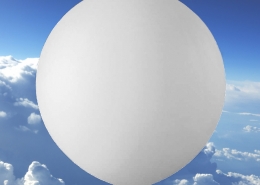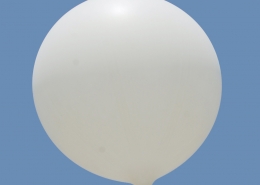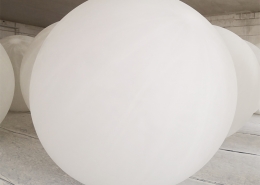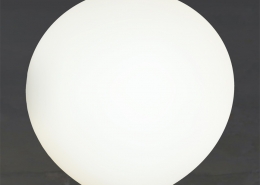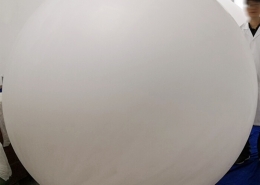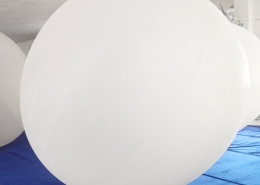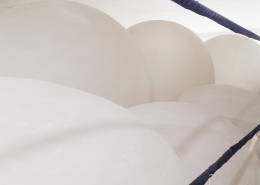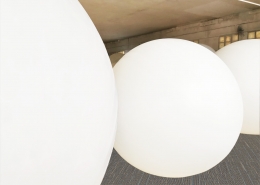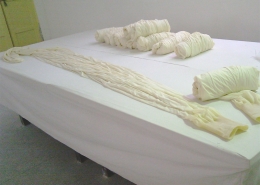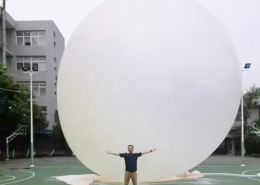support
Meteorological Balloon Survey and Analysis Report
1.Overview
High-altitude meteorological observations play an important role in weather forecasting and climate change monitoring. At the same time, high-altitude meteorological observations can also serve as a benchmark for verifying and calibrating atmospheric remote sensing detection, playing an important role in the calibration process of remote sensing instruments. High-altitude observation data not only needs to meet the needs of weather analysis and numerical forecasting but also needs to meet the requirements of climate change monitoring. Therefore, the accuracy of high-altitude observation data has been proposed to meet the requirements of the World Meteorological Organization (WMO) and the Global Climate Observing System (GCOS). In order to achieve this goal, new technologies and methods must be continuously applied to improve the detection accuracy of sounding instruments and the quality of conventional high-altitude observation data to meet the needs of various different businesses.
2.Current Status of Sounding Equipment Industry
The general sounding system is mainly composed of three parts: sounding instrument, carrier, and ground receiving equipment. The sounding instrument integrates various meteorological element sensors and communication modules, responsible for collecting meteorological element information such as high-altitude temperature, humidity, and pressure, and transmitting data to ground receiving equipment through communication modules. The carrier refers to the device that carries the sounding instrument into the air, usually a sounding balloon, aircraft, airship, or sounding rocket. The ground receiving equipment mainly receives meteorological element information and sounding instrument position information transmitted by the sounding instrument. At present, the L-band radar sounding system used in China’s business is about to be operated by the independently developed Beidou navigation sounding system.
2.1 Carrier (Meteorological Balloon)
2.1.1 High-altitude Observation of Balloons
Balloons carry sounding instruments to detect airborne meteorological elements. It is mainly used for meteorological research and business work such as weather forecasting, climate observation, and climate change estimation by meteorological departments, as well as providing meteorological security conditions for national defense scientific research, military operations, and transportation. Balloon-loaded high-altitude meteorological observation is closely related to human survival and development, aviation, aerospace, military, and other applications. It is an important part of comprehensive meteorological observation and one of the difficulties in meteorological observation. The air in the high altitude is thin, and there are ionization, ozone, pollutants, radiation, and dynamic processes. In addition to conventional atmospheric physical parameters such as temperature, pressure, density, and wind, high-altitude atmospheric physical parameters also include atmospheric airglow intensity, solar intensity and X-rays, ultraviolet radiation, solar particle radiation, cosmic ray intensity, ionospheric structure, and high-altitude atmospheric physical and chemical processes, etc., which are of great significance to spacecraft launch, missile and satellite orbit design, manned spacecraft launch and recovery, and nuclear warhead overload detonation. High-altitude atmospheric data is an indispensable source of data for atmospheric physics, space environment research, and applied physics research, and is one of the foundations for improving meteorological forecast accuracy.
The balloon used to carry conventional high-altitude detection instruments is usually an inflatable spherical balloon, which is called a meteorological balloon or sounding balloon. This type of balloon should have sufficient size and weight to overcome the influence of complex meteorological conditions in high altitude, ensuring that the carried load/measuring element has a good ascent speed, and rising to an altitude of 30 kilometers to 50 kilometers or more for detection, Therefore, it has a high level of technology and very strict production, research and development, testing, and access requirements. From the Montgolfier brothers’ experiments in the 1780s to Michael Faraday’s groundbreaking experiments in 1824, balloons have inspired centuries of innovation. In 1902, Assmann proposed using rubber balloons to explore the atmosphere and a method of tracking wind using a theodolite. In 1927, Molchanov developed the first radio sounding instrument, ushering in a new era of meteorological detection. In the last century, radar detection has taken the development of latex balloons to new heights. The upgrading of intelligent detection systems in this century has driven new demands for meteorological detection, making various detection methods such as wind measurement, sounding, tethering, altitude control, and level drift a reality, and improving detection accuracy.
2.3.1.1 Ceiling and polit balloon
Ceiling and pilot balloon (also known as small balloons) are made of natural rubber latex or chloroprene latex/other synthetic latex, with a skin weight of about 10g to 200g. They are mainly used for wind measurement with theodolites or boundary layer soundings, with a maximum altitude of 10-20 kilometers.
2.3.1.2 Sounding Balloon
Sounding balloons are made of natural rubber latex or chloroprene latex/other synthetic latex, with a skin weight of 200g to 6000kg. They carry 200-1000g of instruments and ascend at a speed of 5-6 meters/second. The maximum altitude can reach 20-50 kilometers or more. They are used for high-altitude exploration.
2.3.1.3 Tethered Balloon
Tethered balloons are controlled by a cable attached to a ground winch. They are usually made of polyester film in a streamlined shape. The length of the cable and the angle with the ground can estimate the height of the balloon from the ground. They can carry measuring instruments to a designated height for continuous measurement for several hours, and can be retrieved for multiple uses. They are particularly suitable for monitoring atmospheric pollution and studying the atmospheric boundary layer.
2.3.1.4 Constant Altitude Balloon
A constant altitude balloon floats steadily on an isodensity surface in the atmosphere, also known as an isodensity balloon or isobaric balloon. The balloon is made of a plastic composite film with strong pressure resistance and good air retention. When inflated on the ground, it is only partially filled with gas. As it ascends to the predetermined altitude, its density remains constant, and it remains on the isodensity surface. The size of the balloon depends on the flying altitude and the weight of the carried instruments, ranging from as small as one meter to tens of meters in diameter. It can float in the air for several days to months. A large constant altitude balloon with a diameter of 22 meters and an altitude of 24 kilometers can carry 200 sounding instruments, receive satellite instructions, and drop a sounding instrument every certain distance. The dropped sounding instrument has a parachute and sends observation data through wireless signals to the mother balloon, which then relays the data to the satellite and ultimately to the ground station. This combined system of constant altitude balloons and satellites is known as a mother-son constant altitude balloon system, which has been widely used in measuring the properties of air masses and atmospheric electrical characteristics, among other applications.
2.3.1.5 The flat-floating dual-mode meteorological balloon
The “flat-floating dual-mode meteorological balloon” (referred to as a flat-floating balloon) is a new type of high-altitude meteorological detection carrier for near-space. It can not only carry detection instruments like conventional meteorological balloons, but also maintain a flat-floating state for several hours at a certain height. The flat-floating balloon, combined with a fuse device, can achieve three consecutive observations of “ascending-flat-floating-descending” with one launch. The flat-floating balloon is a double-layered structure consisting of an outer sphere, an inner sphere, and an inflation valve. The inner sphere is placed in the outer sphere cavity and tied to the inflation valve. The inflation valve has two independent unidirectional channels for inflating the outer and inner spheres respectively. The inflation valve has good sealing performance. When launched, an appropriate amount of lifting gas is filled into the inner and outer spheres. When the outer sphere reaches a certain height, it bursts, and the inner sphere enters a flat-floating state, continuing to carry detection instruments for meteorological element detection.
2.3.1.6 NSL Meteorological balloon
The NSL series meteorological balloons all use a specially designed double-layer ball structure: the inner ball is the main functional meteorological balloon, and the outer ball is an auxiliary protective balloon. The handles of the inner and outer balls are fixed together through a one-way nozzel and are used with a matching inflation balance device. When the outer ball is inflated to the corresponding net lift at around 10,000 to 13,000 meters in altitude, it will burst. After the outer ball bursts, the vast majority of the debris will detach from the main body of the balloon, and the main body of the balloon will continue to carry the instrument to the designated airspace.
Our NSL series meteorological balloons (NSL-40 sounding balloon and NSL-45 sounding balloon) for near-space use have been developed using advanced materials processing. They can carry various types of sounding instruments/other detection instruments to reach near-space at 40-50km (which is also the highest altitude in the world) and the effective rate of bursting altitude can be more than 90%
During the ascent, in-situ detection of near-space temperature, air pressure, wind field, etc. can be performed. These balloons have the advantages of low one-time investment, low cost per detection, and the ability to carry different detection instruments to detect multiple environmental factors with greater flexibility. The detection implementation is not affected by geographical and climatic factors. Compared with other detection methods such as meteorological rockets, laser radar, and satellite remote sensing, the technology of carrying sounding instruments on meteorological balloons for detection has the advantages of low cost, flexible operation, and high safety performance, making it suitable for business application.
This functional specification requirement document standardizes the composition structure, functional requirements, performance requirements, and inspection requirements of the NSL series double-layer combined meteorological balloons under all-weather climate conditions (including rainy and snowy weather, strong wind weather, high humidity weather, extremely cold weather, etc.) in the stratosphere. The main and auxiliary balloons of the meteorological balloon are made using mature ion deposition process technology. The main material is natural latex, and chloroprene latex/nitrile latex with improved performance is used. A cold-resistant system with a lower solidification point plasticizer is used. The aging resistance system with strong ozone resistance and UV resistance is preferred. Nano-enhancement technology is used. Through formula and process research, combination meteorological balloons that can provide sufficient expansion volume are developed to meet the needs of maintaining the flight buoyancy of balloons in various spatial segments of the stratosphere.






